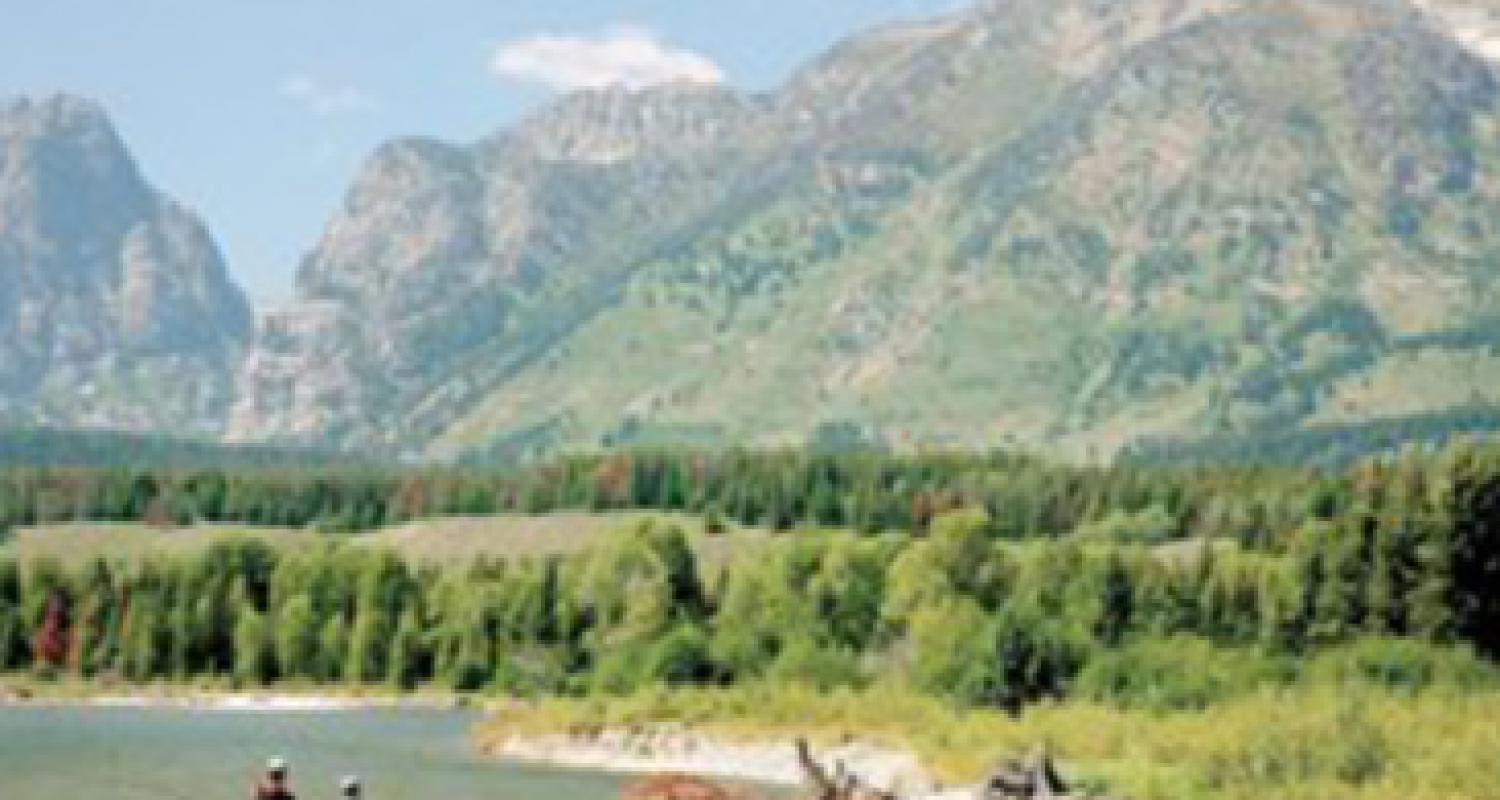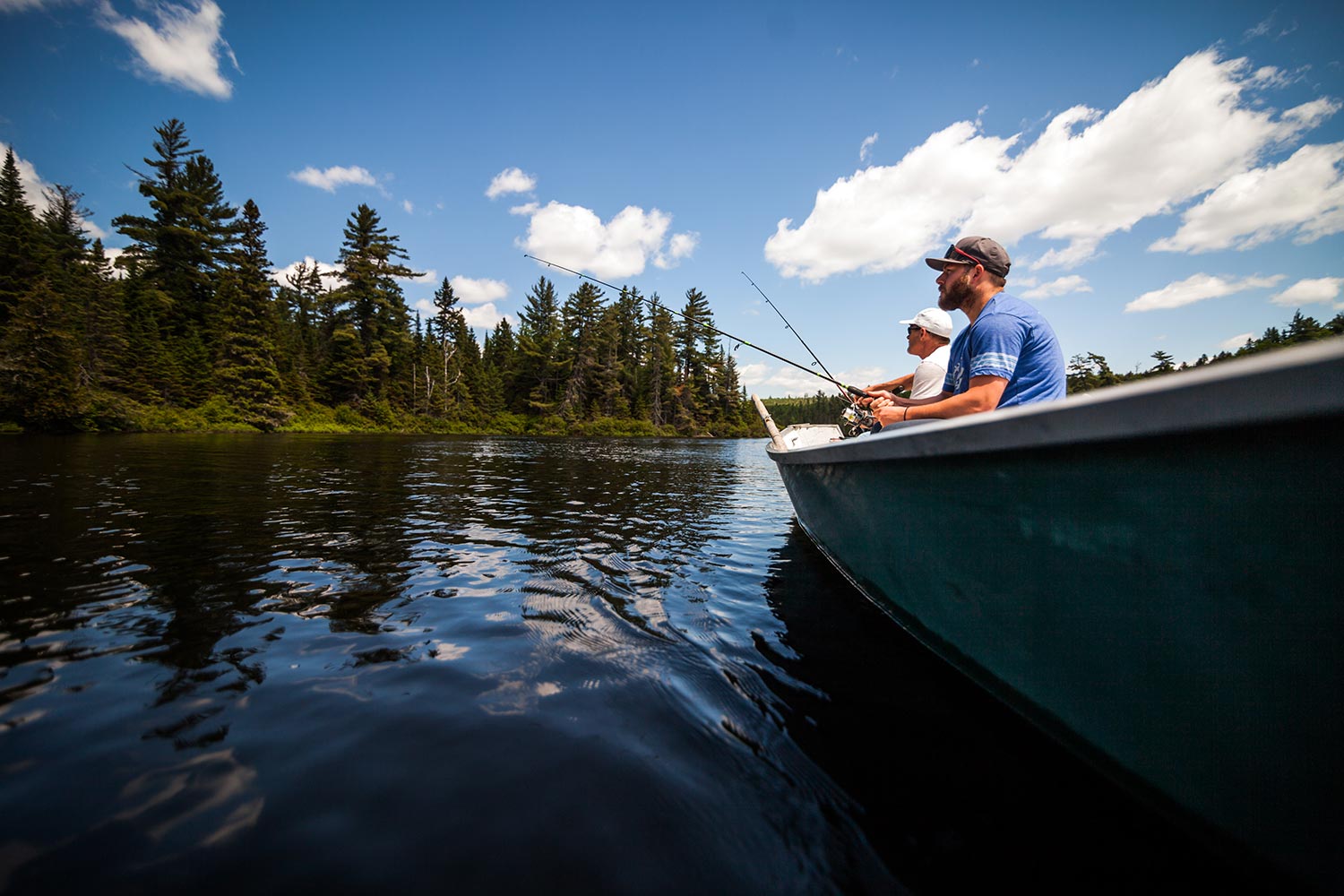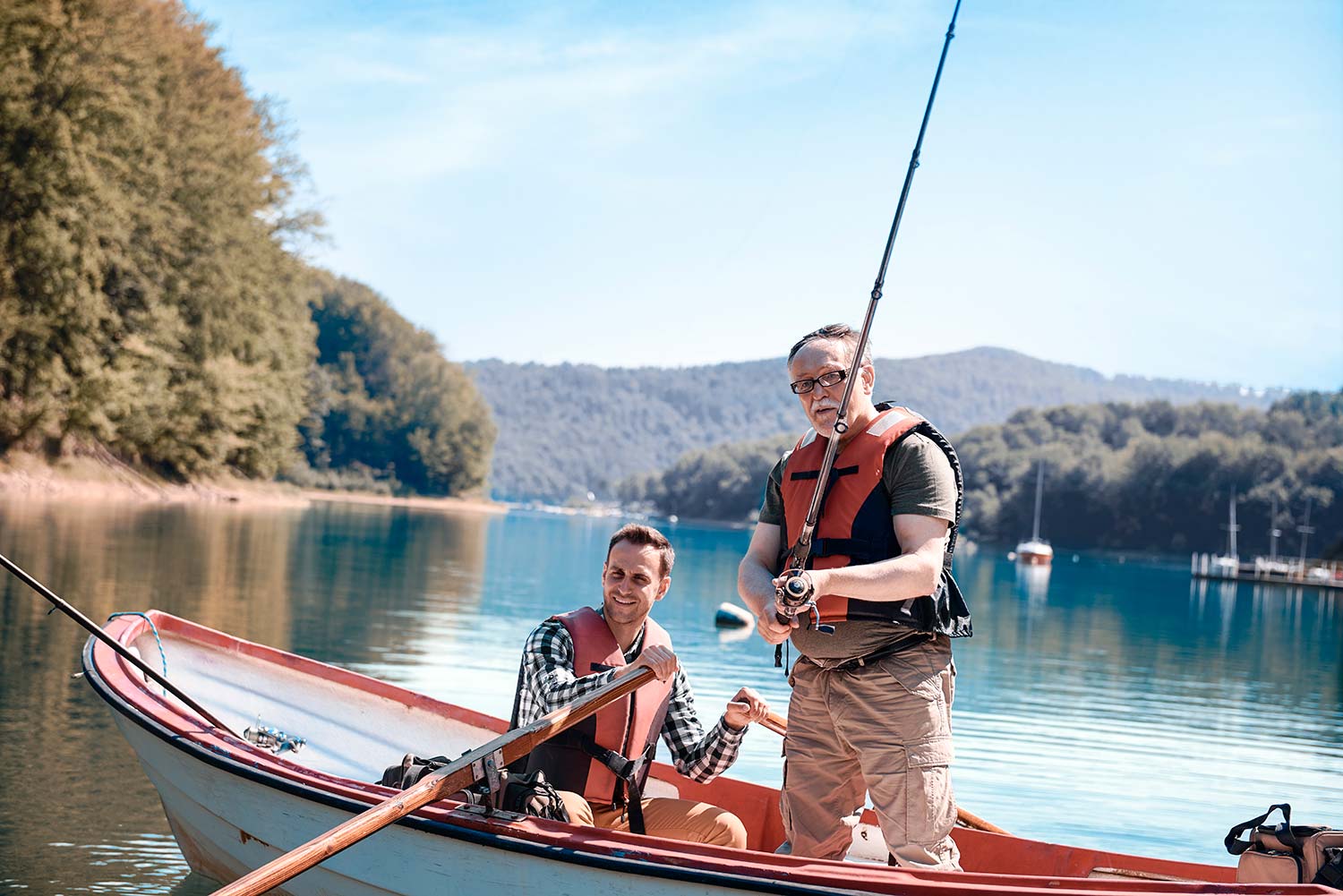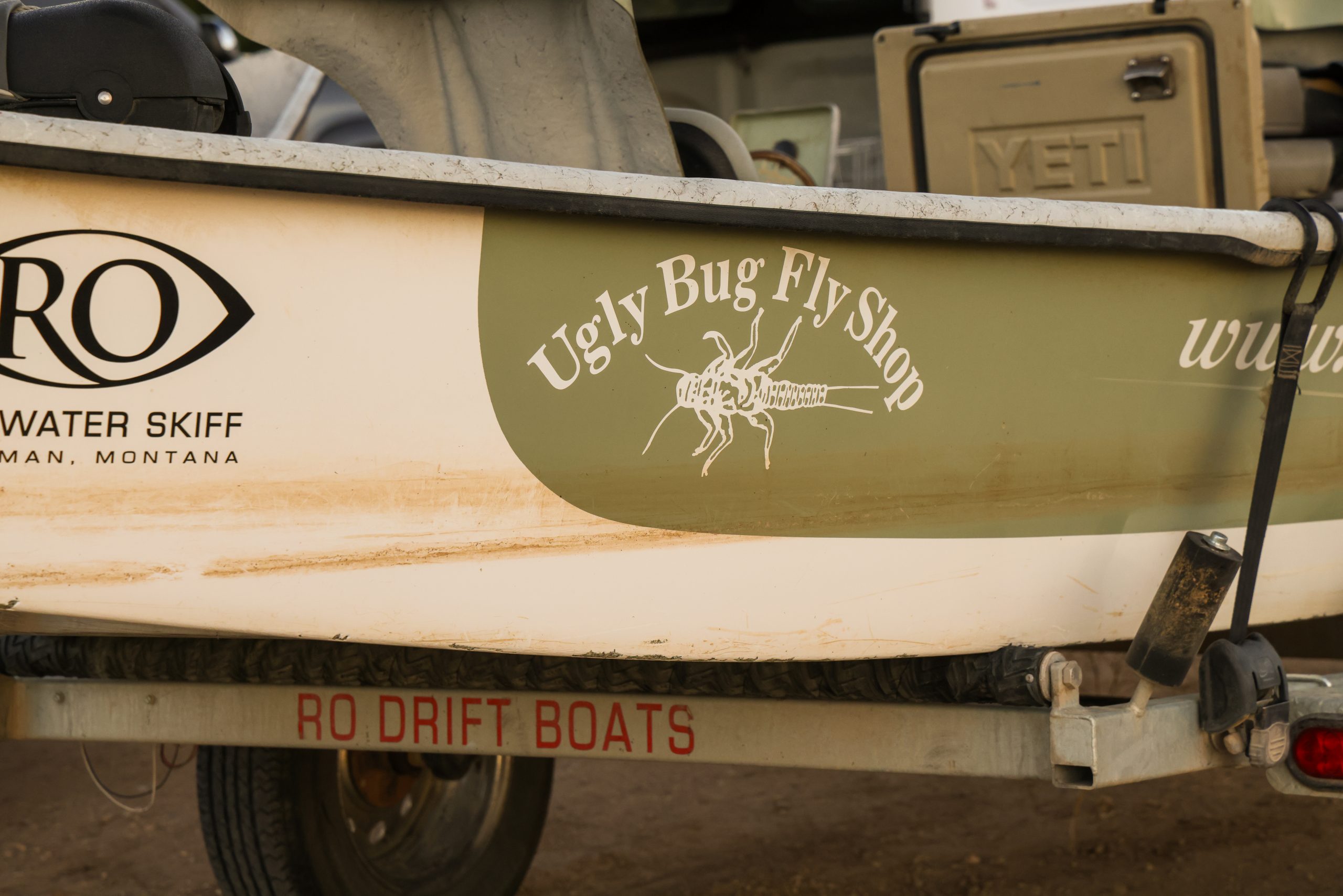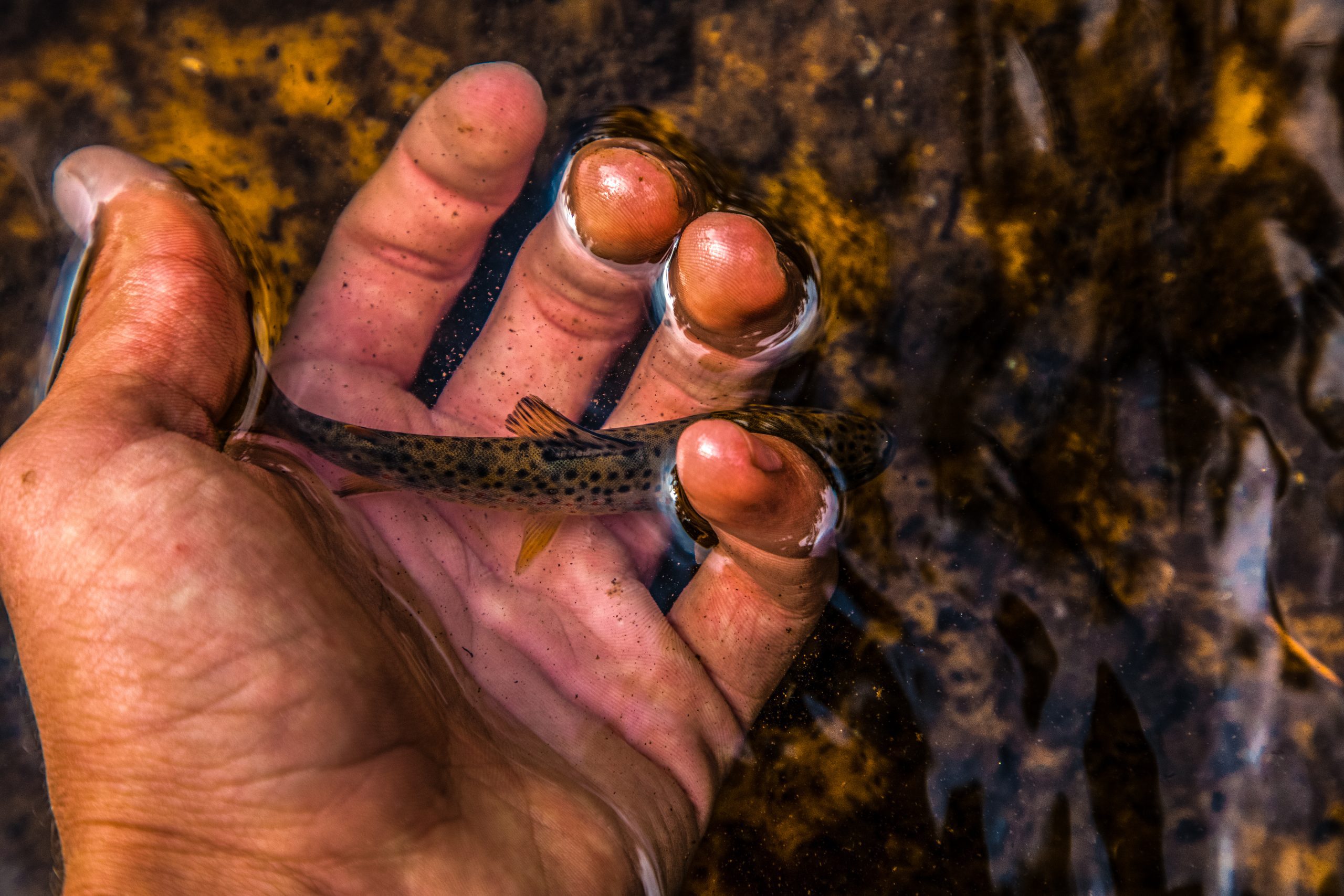Here is a great article from Elevation Outdoors talking about the “Miracle Mile” section of the North Platte.The “Miracle Mile” is a hallowed stretch of Wyoming’s North Platte that is actually many miles long, running between the Seminoe and Pathfinder reservoirs. Legendary broadcaster, Red Sox announcer and Wyoming native Curt Gowdy gave the place its name in a famous episode of ABC’s “The American Sportsman” because it holds some massive brown and rainbow trout, but cowboys and hardcore anglers more often refer to it as “that dirty little ditch in the desert.” That doesn’t keep the faithful away, however, and one of its biggest adherents is Patagonia CEO Casey Sheahan, who took the time to tell us why he loves the Miracle Mile, the sport of fly fishing and the Tenkara craze.

Turning Japanese: Sheahan learns tenkara technique from Patagonia founder Yvon Chouinard on the Snake. Courtesy: Bill Klyn/Patagonia Inc.
How often do you go to the Miracle Mile? Why do you keep coming back?
Maybe once a year if I’m lucky. It’s just such a wild place and there’s a chance to hook a ten-pound brown trout. You don’t see stars at night anywhere else in the continental U.S. like you do in Wyoming. You can howl at the moon and no one will hear. I made my first trek there in March 2001 with my son, Aidan, and Boulder wingman Mike Moore. It felt like the jetstream was right on the ground that bitter, gray day. There were huge snowdrifts and deep ruts making the dirt road from the gas pump/store in Alcova, Wyoming, a spooky, lonely approach. We spent the night in some kind of drafty plywood structure at Miracle Mile Ranch, and played poker and loud music to overcome the howling wind. We tried to fish the next morning but couldn’t get our fly lines to stay on the water. We bailed, and on the road to Sinclair almost got run off the road by the local sheriff, lights and siren blaring, chasing some cowboy fugitive in a pick-up truck, both sides in the conflict brandishing pistols out side windows.
How is fishing the Mile different than other waters in the West?
It’s inconsistent as hell. Sometimes the trout are there, other times they are hard to find. Mid-winter is a good time to go, but I don’t have to tell you that that is a dangerous season to be 50 dirt-road miles from a snowplow and a hamburger. And the weather the rest of the year isn’t much better—wind, rain, snow almost any day and no place to hide from it. A hard-sided camping rig is clutch. The browns and rainbows will eat San Juan worms, scuds and emergers like other Western rivers but sometimes the weather—mostly the wind–is so bad you might spend 36 hours inside the camper sipping brown liquor and waiting for the front to pass.
Any big moments on the river there that have become personal legend?
Why is fly fishing so important to you?
Fly fishing is a metaphor for life. You can bring your pain, frustrations, perfectionism and competitive attitude to the river or you can leave all that behind and have a joyful experience being a part of all the abundant beauty the universe has given us to enjoy in this life. The choice is yours every day. As I get older, I am finding that focusing on the outcome—catching lots of fish or big fish—is not as important as the process itself. I learned this from Zen Master, Yvon Chouinard, who has patiently coached me in all aspects of fly-fishing since I was a kid. His advice: slow down, focus on casting effortlessly, become aware of your surroundings, be a student of what is going on below the surface of the water. Watch, listen, and don’t be in such a damn hurry. Finish what you start. Positive outcomes in fly-fishing are the result of excellent, consistent and thoughtful execution. This is how it works in business too.
Lots of our customers include fishing as just another fun option on their year-round activity menu, the same as climbing, skiing and surfing. We are passionate about our core sports but also promote a generalist approach that embraces varied, sustainable and healthy lifestyle choices. We are in the organic food business now with Patagonia Provisions—selling Canadian salmon that is caught in upriver, First Nations dip net and beach seine fisheries that allow healthy salmon populations to escape and reproduce naturally as opposed to gillnet fisheries that indiscriminately take every fish in the river. We don’t believe that catch-and-release fly-fishing is at odds with our environmental values. Organizations that actually promote hunting and fishing such as Ducks Unlimited and Trout Unlimited have done more to protect waterfowl and fish habitat than any other efforts we know. You protect what you love.
Yvon has gotten some press since he has been using Tenkara rods. Have you tried Tenkara at all?
Yes! That method is deadly and Yvon is the king of Tenkara. Tenkara dates back to the 15th Century and Yvon is certain it can save the sport of fly fishing from over-complication and all the expensive, esoteric gear. Tenkara’s so easy to learn and the trout love the subtle swimming action of emerging nymphs and midges you can only make happen with a long, bendable Tenkara rod. We took 21 Patagonia designers up to Wyoming last September. They learned how to tie a simple soft hackle fly at Yvon’s house in Moose. Then everyone went fishing on the Snake River for a few hours. Nineteen out of the 21 mostly first time fly fishers caught fish. I don’t know many traditional guides who could produce results like that. I’ve seen Yvon coach six-year-olds into multiple fish on the first outing. The only problem with Tenkara is there is no reel on the rod so you have to toss the rod into the river and swim after it if you get a big fish. I just watched a video of Craig Matthews (owner of Blue Ribbon Flies in West Yellowstone, Montana and co-founder with Yvon of 1 Percent for the Planet) winter midge fishing on the Madison. He hooks a 22-inch rainbow and has to throw the rod in the river and go after it. Brrrr.
Does fly fishing affect your environmental outlook?
Being in nature with a fly rod in hand has made me more aware of how quickly the climate baselines are shifting. When you fly to Alaska or B.C., every year, you can see how fast the pocket glaciers are melting. In my home state of Wyoming and now Colorado, the explosion of pine beetle-killed trees and warming, dewatered rivers is alarming. We are in danger of losing our water supplies due to long-term drought and global warming. The practice of hydraulic fracturing and the toxic chemicals employed in oil and gas exploration is a horrendous threat to our deep-water aquifers. If you pollute the headwaters of the Platte, Green and Colorado Rivers, you are putting the drinking water of a 100 million Americans at risk forever. You can’t un-ring that bell.

